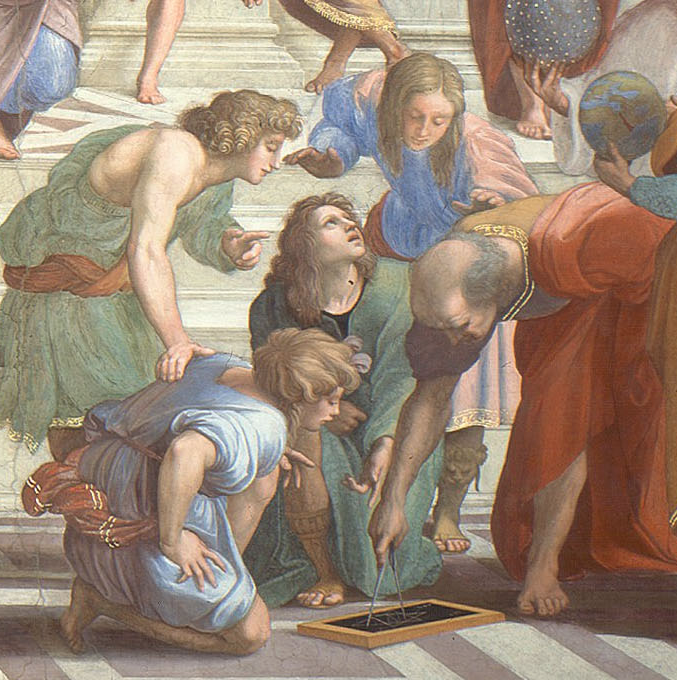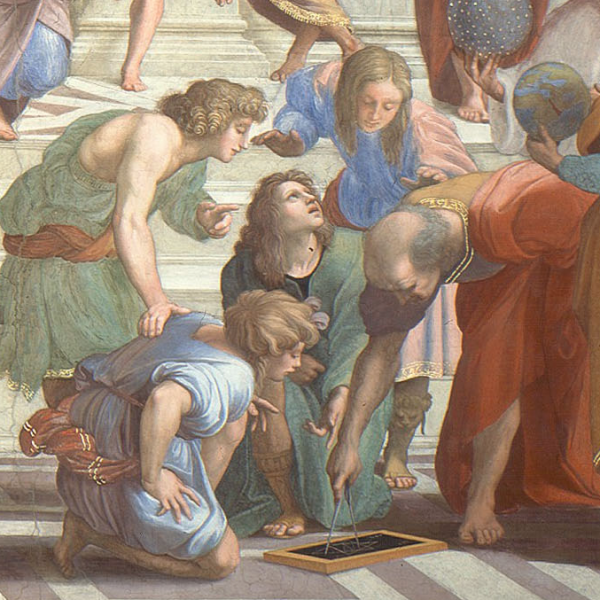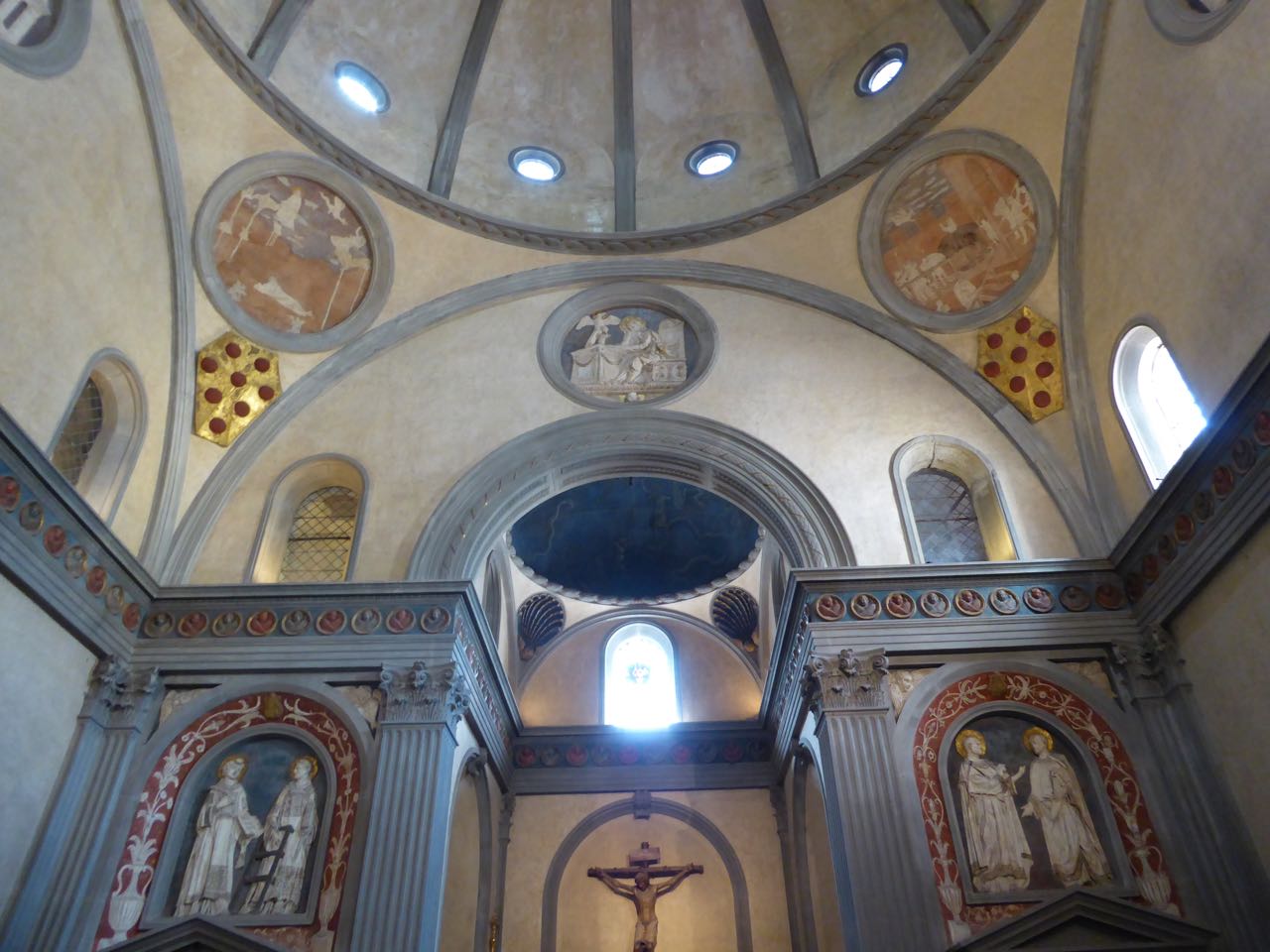Director Nick has been musing on a BBC Radio 4 programme on Euclid’s Elements (you can download it here).
Euclid was the Greek mathematician writing around 300 BC who came up with the Golden Section which, in turn, had such a great influence on the Renaissance and the world of aesthetics and science. He is the fellow in Raphael’s “School of Athens” demonstrating geometry or at least, thought to be. Some argue this may be Archimedes of Syracuse.
The Elements is written in 13 volumes (less onerous than it sounds, a volume, in ancient terms, is like a book in the Bible).
It is amongst the earliest books to be printed in the 1480s in Italy, at the time of Leonardo. It is also commentated upon by Britons, including Playfair in the eighteenth century.
Euclid proves through mathematics, things which are provable and always true (universal truths) – these, in turn, are used by Renaissance man as an indication of God’s presence. Many Churches, from Chartres Cathedral to Brunelleschi’s Old Sacristy, employ the Golden Section for its Divine implications. Painters too, like Piero della Francesca, use the Golden Section and in today’s world of science, the Golden Section appears within cell structure and nature.
This video is worth 4 minutes of your time – when did you last see Donald Duck and Greek architecture together?
One thing that strikes me is that Euclid’s geometry is based on 2-dimensional geometry but when one speaks of the geometry of a curve, i.e. the curvature of the world, or indeed, 3-dimensional geometry, not all of Euclid’s truths apply. These later two are non-Euclidian geometry.
Most amazing of all is that Euclid’s mathematics is born of a society which needed to solve building problems in emerging city-states. How do you mark out a perfect square foundation the size of half an acre, with right angles and so on? You do it with a stake, a pole and geometry which will always give you the right answer. On paper, we do the same with a ruler and a compass.

“God the Geometer”, 13th century manuscript, frontispiece of the Bible Moralisée of Blanche of Castile
Why is it important? It raises the thought that there may be natural laws to aesthetics or rules of beauty and that, as Keats says, “truth is beauty and beauty truth”. Euclid reminds us that he was only dealing with two dimensions and that there is so much more mathematics to be had. Euclid also reminds us of the fluidity between the arts and the sciences and this is the sort of cross-curricular knowledge that is at the heart of AHA.





